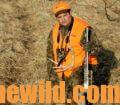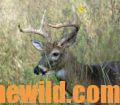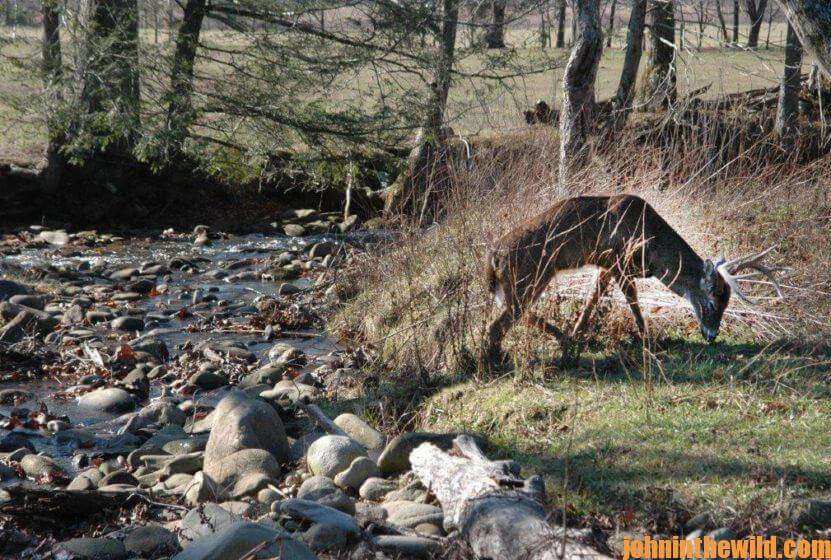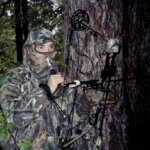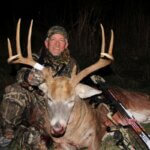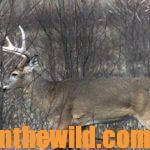Editor’s Note: Although the time is near the middle of February, several states still are having deer season. Next year, you can plan to hunt in Delaware, Texas, Rhode Island, Ohio, Louisiana, Pennsylvania and Maryland until the end of January. The states holding February deer hunts, include:
* my home state of Alabama with some sections of the state still in rutting season. Alabama’s deer season ends in mid-February;
* Mississippi, where you can hunt with primitive weapons (archery and muzzleloaders) until mid-March, in parts of the state;
* Florida’s Panhandle where deer season lasts until February 23;
* Arkansas with a season ending the end of February; and
* Virginia with its urban archery hunts primarily on private lands to try to reduce suburban yard damage and deer-car collisions that doesn’t end until March 29th.
 Some years ago, I asked Dr. Larry Marchinton, retired professor of wildlife sciences at the University of Georgia, who has studied and researched white-tailed deer for years, “If you only could pick one area where you think your odds were best for taking a buck, what would that area be like, and why would you pick that one site?” Marchinton didn’t hesitate when he answered, “To take a buck at any time of the year, your odds are best when you’re hunting a funnel.”
Some years ago, I asked Dr. Larry Marchinton, retired professor of wildlife sciences at the University of Georgia, who has studied and researched white-tailed deer for years, “If you only could pick one area where you think your odds were best for taking a buck, what would that area be like, and why would you pick that one site?” Marchinton didn’t hesitate when he answered, “To take a buck at any time of the year, your odds are best when you’re hunting a funnel.”
 Avid deer hunter, Dr. Robert Sheppard of Tuscaloosa, Alabama, had noticed a nice buck standing beside a creek several times as he’d gone to his stand in the morning, come back from his stand at lunch and moved back to his stand in the afternoon. Sheppard didn’t always see the buck next to the creek, but he had spotted this buck enough times that he decided to hunt him. “Although I could see where the buck was going from the place where I’d seen him several times, his trail just seemed to appear and then vanish,” Sheppard said. “I couldn’t see where he was coming from, to get to that spot on the creek. Finally, one day I went under the bridge and realized that the buck had a trail – a well-worn trail he was
Avid deer hunter, Dr. Robert Sheppard of Tuscaloosa, Alabama, had noticed a nice buck standing beside a creek several times as he’d gone to his stand in the morning, come back from his stand at lunch and moved back to his stand in the afternoon. Sheppard didn’t always see the buck next to the creek, but he had spotted this buck enough times that he decided to hunt him. “Although I could see where the buck was going from the place where I’d seen him several times, his trail just seemed to appear and then vanish,” Sheppard said. “I couldn’t see where he was coming from, to get to that spot on the creek. Finally, one day I went under the bridge and realized that the buck had a trail – a well-worn trail he was 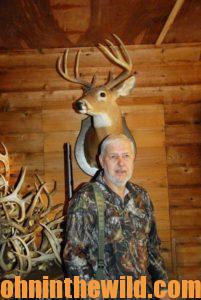 using to come under the bridge. Next, he walked in the creek, and then he came out under a white oak acorn tree. So, I set up my tree stand to take the buck where he came out of the water and headed for the white oak. After I took that buck, I checked-under more bridges around the area as I hunted. I learned that you might find a very-good deer trail coming under a bridge in other places, and that the bridge often would serve as the neck of a funnel to allow deer to get from one side of the road to the other side of the road without having to cross the road.”
using to come under the bridge. Next, he walked in the creek, and then he came out under a white oak acorn tree. So, I set up my tree stand to take the buck where he came out of the water and headed for the white oak. After I took that buck, I checked-under more bridges around the area as I hunted. I learned that you might find a very-good deer trail coming under a bridge in other places, and that the bridge often would serve as the neck of a funnel to allow deer to get from one side of the road to the other side of the road without having to cross the road.”
To learn more about deer-hunting strategies, read Dr. Bob Sheppard’s book, “Whitetails: An Unprecedented Research-Driven Hunting Model” available in print at https://www.amazon.com/Whitetails-Unprecedented-Research-Driven-Hunting-Model/dp/1616633824.
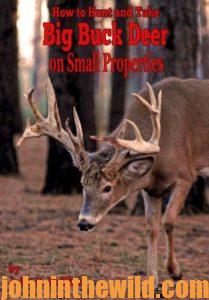 To learn more about hunting deer, check out John E. Phillips’ book, “How to Hunt and Take Big Buck Deer on Small Properties,” available in Kindle, print and Audible versions at (http://amzn.to/1vIcj4m). You may have to copy and paste this click into your browser. (When you click on this book, notice on the left where Amazon allows you to read 10% of the book for free, and you can listen to 10% of the books for free and hear 10% for free).
To learn more about hunting deer, check out John E. Phillips’ book, “How to Hunt and Take Big Buck Deer on Small Properties,” available in Kindle, print and Audible versions at (http://amzn.to/1vIcj4m). You may have to copy and paste this click into your browser. (When you click on this book, notice on the left where Amazon allows you to read 10% of the book for free, and you can listen to 10% of the books for free and hear 10% for free).
Tomorrow: Learning How Habitat Changes Create Funnels Deer Use

